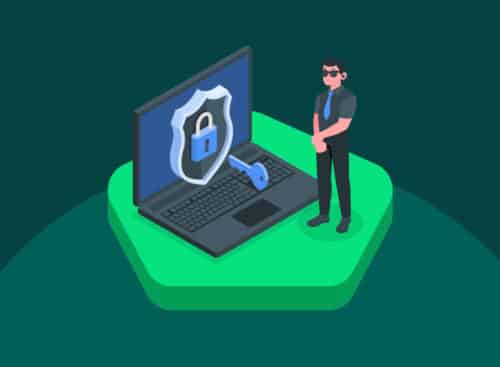
Guardians of Data: Digital Security Practices Robustness.
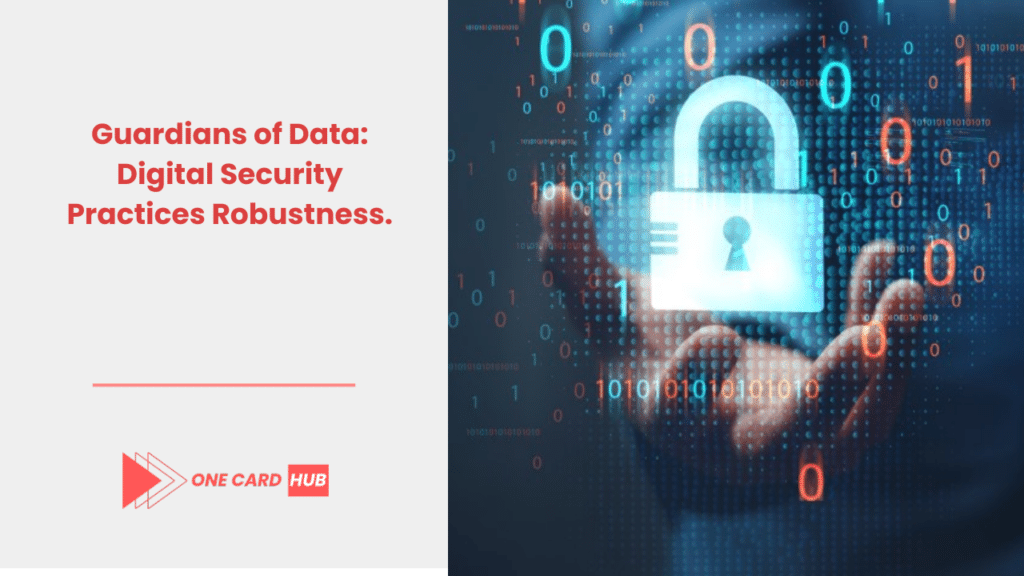
Data is an intricate part of our digitalized world where everything is under constant development. From personal documents to corporate assets, data security and integrity are the issue that must be addressed properly. Nonetheless, as the use of digital data becomes pervasive, so will also the complexity of the attacks designed to undermine it. To be datakeepers, we shall first need to be dedicated to advanced digital security practices. The blog post under review looks at the vital tactics and measures which individuals and organizations can implement to safeguard their digital possessions.
Embrace a Security-first Mindset
Implementing a security-first mindset is the vital starting point to defend data. This means security in all aspects of digital communication, from the stage of creating software programs to that of everyday online behaviors. A security-first strategy is about being proactive rather than reactive, identifying possible vulnerabilities, and putting preventive measures in place to prevent cyber-attacks in advance.
In Place of Comprehensive Cyber Hygiene.
Good cyber hygiene is an essential factor of overall digital systems health and protecting data. This involves the updating of software and operating system, creation of unique passwords (and the use of password managers), and the installation of antivirus and anti-malware solutions. Educating oneself and others to identify phishing attempts and refrain from downloading, clicking, or opening suspicious links, files, and email attachments is also part of good cyber hygiene.
Adopt Multi-layered Security Measures
Today's cyber threat landscape is quite complex, which makes the application of a single line of defense inadequate. A tiered security method that has both software and hardware barriers such as firewall, encryption, intrusion detection system, and data loss prevention tools provides multiple levels of protection to protect sensitive information. This arranged technique makes unallowed access more complicated and helps to check data even if one security defense is broken.
Backup and Encryption are done on a daily basis.
The practice of backing up data on a regular basis is of utmost important because in case of a cyber attack like ransomware, important information can be retrieved. These backup copies must be kept secure and, if possible, in multiple locations. For data security, they may also be encrypted. Encryption likewise should be applied to data at rest and in motion, and as a result, will look meaningless to those who are unauthorized.
Cultivate an Environment of Security Awareness
Digital security is not just about machines but people as well. Building an atmosphere of security consciousness within organizations or among their members may dramatically reduce the risk of data breaches. Part of this involves continuous training, security exercises, and creating a culture where employees can report anomalies without fear and feel free to share their concerns.
Leverage Advanced Security Technologies
As cyber attack techniques continue to develop, the incorporation of AI and ML empowered advanced security technologies can give an edge over the competition. With these technologies able to forecast and pinpoint threats earlier compared to the traditional approaches, they can be proactive in protecting the cyber assets.
Enable Compliance with the Data Protection Regulations
The implementation of data protection laws across the globe, such as GDPR in the European Union, CCPA in California, and others, is not only a legal obligation but also a best practice in ensuring the security of digital environment. These regulatory laws are defining the rules for data processing and protection offering a framework to ensure personal information is secure from hacking or unlawful access.
Enable Compliance with the Data Protection Regulations
The implementation of data protection laws across the globe, such as GDPR in the European Union, CCPA in California, and others, is not only a legal obligation but also a best practice in ensuring the security of digital environment. These regulatory laws are defining the rules for data processing and protection offering a framework to ensure personal information is secure from hacking or unlawful access.
Planning and Testing of Incident Response Plans
An effective incident response plan is an inherent part of a digital security strategy charter. The following is the plan on how to respond in case of a data breach or attack by cyber criminals, including containment, investigation, remediation, and communication channels. The plan for incident response is tested and updated periodically to ensure that the employees are ready for security incidents of any sort.
Guardianship in Action
In the digital world, where data not only function as currency but also are a commodity, being a guardian is a role that must be embraced. Through applying resilient digital security mechanisms, both individuals and organizations can defend their beneficial information assets against current state-of-the-art cyber threats. The process of building a strong digital environment is ongoing, thus it requires the dedication and willingness to adapt, innovate and streamline the security measures. We shall, all of us, be determined custodians of our data, with an objective of guarding it for ages to come. online activities.
Prioritize Endpoint Security
In the time that remote work became the new normal, securing endpoints—such as laptops, smartphones, and so on that connect to your network-- is more critical than ever. Endpoint security solutions to help monitor and protect the devices from different cyber threats thereby ensuring that any endeavor of unauthorized access or malware infection can be identified and neutralized without delay. The enforcement of policies related to the use of secure devices and awareness raising of users on the need of endpoint security are vital points in safeguarding data.
Underline Identity and Access Management (IAM).
Identity and Access Management (IAM), if it is well-implemented, authorizes the right people to access the right resources at the right moments for the right purposes. IAM systems are powerful tools which enable the prevention of unauthorized access to data and systems by using strong authentication methods, granular privilege management, and activity monitoring. Implementing functions like MFA and SSO could fundamentally improve security without making it more cumbersome for users.
Embark on Threat Intelligence Sharing
Threat intelligence sharing means sharing of knowledge about the possibility or ongoing threats with other organizations and other competent people. This method can give the insight into unknown cyber attacks, weakness and opponent. Through participation in threat intelligence communities, organizations can obtain the information that helps them to strengthen their defenses and conduct the attacks on time before they have happened.
Conduct Regular Security Audits and Assesments
Conducting monthly security audits and assessments is essential to find out what security issues and gaps do you have in your cybersecurity profile. Such assessments should determine all IT environment parameters, including network security, application security, and data protection. The findings can help to define and make strategic adjustments that would ensure that security measures remain effective against developing threats.
Adopt Secure Cloud Services
In view of the widespread back-up via cloud services of data from end-users, protecting the security of these service offerings is vital. Choose cloud vendors that offer unbeatable security features such as encryption, access control, and routine security audits. Recognizing the role that the shared responsibility model of cloud security plays—where each of the parties involved in the process of keeping data safe in the cloud shares part of these obligations—is crucial from a security standpoint.
Provide for Business Continuity and Disaster Recovery Planning
A holistic business continuity and disaster recovery plan will allow your organization to continue running and to come back to normal in case of a cyber attack and data breach. This policy will involve the procedures for data backup and restoration, regulating the critical operations during a situation and communication with the stakeholders during and after the incident.
Utilize Legal and Regulatory Resources
Keeping abreast of all the statutory and regulatory alterations that affect digital security and data protection will help to strengthen the various layers of security. Attorneys with expertise in cybersecurity can provide vital information on compliance, breach notification laws, and how to reduce the legal consequences of cyber attack by using cyber threat strategies.
A Collective Endeavor
Digital frontier safety in collective activity need the participation of all actors involved. Ranging from individuals to large organizations, contribute to various degrees of danger from diverse cyber threats that pervade the cyberspace. Through having a holistic and proactive digital security, being aware of technologically modification and best practices, and finally encouraging security culture and collaboration, our digital assets will be safeguarded. Security guardians will not only be watchful and persistent but also make the digital world safe and robust for the coming generation.
Integrate Security into the entire software development process.
One of the leading approaches to preventing software vulnerabilities is DevSecOps, which stands for integrating security concerns into software development throughout the software development lifecycle from the very beginning. Integrating security into every development phase, from the initial design to the deployment, the organization will be able to put security in the heart of products and services rather than be an additional step at the end. Constant security training for developers with incorporation of automated security testing tools enables us to notify and remediate the issues at the early phase of the development process.
Develop Partnerships for Enhanced Comprehensive Security Cooperation
Creating cooperative relationships with competition, cybersecurity companies and authorities will contribute to an organization's improved security through the circulation of knowledge and resources. Collaborative activities, like joint cyber exercises and information sharing agreements, can lead to critical information concerning evolving threats and their response mechanisms. These alliances could also help pave the way for a coordinated response to large-scale cyber incidents, thus reinforcing in aggregate the cyber defense capability in the sector.
Advocacy for Digital Literacy and Responsibility.
Digital literacy and responsibility within all levels of society are crucial for increasing cybersecurity. That is not only the matter of individuals and organizations’ education concerning the risks and ways of protection but also of the understanding of ethical and societal implications of digital actions. Initiatives promoting responsible online behavior, privacy protection, and awareness on digital rights are some of the efforts to develop a safe and dignified digital environment.
Taking advantage of Machine Learning for predictive security.
Machine learning algorithms are able to process huge amount of data in order to discover patterns and automatically recognize the security threats that might happen. Using machine learning to apply preventive security, organizations will be able to have take the upper hand in dealing with and resolving cyber attacks. These gadgets may automatically scan security logs, examine network traffic for odd behaviors, and anticipate attacker behaviors, thus facilitating quick and more efficient security responses.
Promote the development of global cybersecurity norms.
With digital threats becoming transversal, the creation and adoption of universal norms of cyber security is essential. This implies working with international institutions, governments, and other actors to devise transparent rules, principles and regulations to regulate state and non-state actors' behavior in cyberspace. Such norms can be a way to decrease the amount and the severity of cyber conflicts, contribute to efforts on fighting cybercrime and maintain a peaceful and safe global cyberspace.
Invest in Future in Cybersecurity Talent.
It is important to fill up the cybersecurity talent gap since the digital security will suffer otherwise. In this context, there is a need for investments in educational and training programs geared toward developing the next cohort of cybersecurity professionals with the expertise needed to address rapidly-changing threats. Collaboration with educational institutions, scholarships, internships and mentorship programs will foster development of an array of competent and diversified cybersecurity workforce skilled enough to contend with future threats.
Taking on Our Proper Duty of Being Data Protectors
Nowadays, it is vital that we as citizens assume the responsibility of keeping private data secure as the digital world keeps on evolving. Proper digital security principles, culture of security consciousness and international cooperation across sectors and borders can help us to secure our cyber-space and make it resilient. The digital security trip is never-ending and only high devotion of all parties involved will make digital security a comprehensive reality. Our joint effort will make the digital world safer for the current and future generations.
FAQ: Sustaining Robust Digital Security Practices
1. What is the true essence of having a security-conscious approach?
A security-first mentality starts at the level of all digital communication activities and takes precedence in the way decisions are made and potential threats are dealt with before they become problems.
2. It is important to understand why cyber hygiene is essential.
Adequate cyber hygiene including frequent software updates, strong passwords, and careful web behavior increase the chances of preventing cyber attacks and safeguarding digital properties.
3. What is a multi-layered approach to security?
A layered security strategy is developed by putting multiple types of defenses and technologies in place to defend against cyber threats, and even when one fails; others are still there protecting.
4. What does the routine data save for digital security?
Frequent data backups become a precaution against a cyber attack, including ransomware, as the vital information can be restored, reducing the harm and the data loss.
5. In the context of digital assets, how does security awareness influence security?
Security education within individuals and organizations is as vital as it is to the detection and minimization of risks, since human error is where cyber attacks normally start.
6. What are the implications of using AI and ML in the cybersecurity domain?
AI and ML are able to examine data on patterns and predict threats faster than traditional methods, therefore providing a proactive system for protection and quick responses towards attacks.
7. What is the importance of regulatory compliance with data protection?
Compliance guarantees that organizations adhere to the legal framework and standards for data management and protection; as a result, it helps to avoid legal problems and to increase the security of personal data.
A security-first mentality starts at the level of all digital communication activities and takes precedence in the way decisions are made and potential threats are dealt with before they become problems.
2. It is important to understand why cyber hygiene is essential.
Adequate cyber hygiene including frequent software updates, strong passwords, and careful web behavior increase the chances of preventing cyber attacks and safeguarding digital properties.
3. What is a multi-layered approach to security?
A layered security strategy is developed by putting multiple types of defenses and technologies in place to defend against cyber threats, and even when one fails; others are still there protecting.
4. What does the routine data save for digital security?
Frequent data backups become a precaution against a cyber attack, including ransomware, as the vital information can be restored, reducing the harm and the data loss.
5. In the context of digital assets, how does security awareness influence security?
Security education within individuals and organizations is as vital as it is to the detection and minimization of risks, since human error is where cyber attacks normally start.
6. What are the implications of using AI and ML in the cybersecurity domain?
AI and ML are able to examine data on patterns and predict threats faster than traditional methods, therefore providing a proactive system for protection and quick responses towards attacks.
7. What is the importance of regulatory compliance with data protection?
Compliance guarantees that organizations adhere to the legal framework and standards for data management and protection; as a result, it helps to avoid legal problems and to increase the security of personal data.

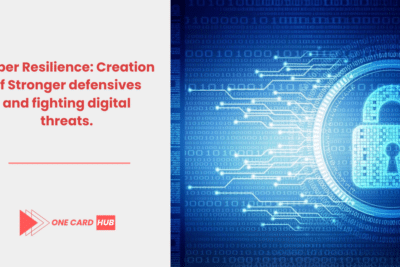


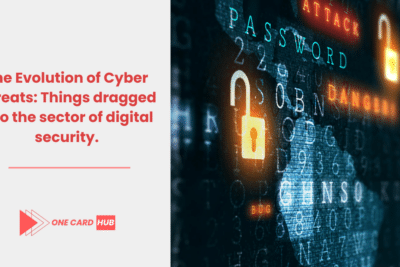
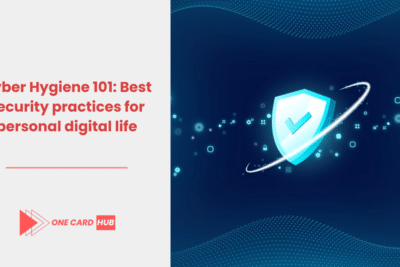
Related posts